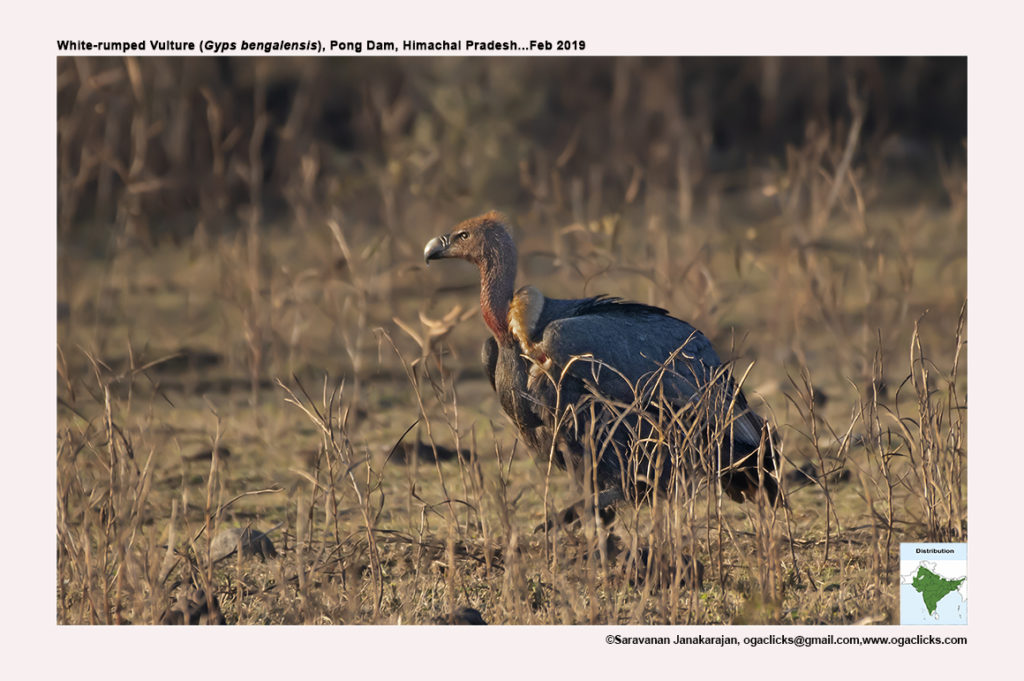White-rumped Vulture

White-rumped Vulture Gyps bengalensis
Etymology:
- Gyps: Greek word derived from Gups -vulture
- Bengalensis: From Bengal in India
Vernacular Names:Hindi: Safed pith Gidh, Pun: Gidh, Girjh, Ben: Sakun, Ass: Xagun, Guj: Gidh, Shwethpeethgidh, Mar: PandhryapathicheGidhad, Ori: Shaguna, Ta: Pinamthinnikazhugu, Te: Mattipudum-gadu, Tellaveepuboruva,Yerkali:Walhorya, Mal: Kazhukan
Critically endangered species: It has been listed as Critically Endangered on the IUCN Red List since 2000, as the population severely declined. They die of renal failure caused by diclofenac poisoning. In the 1980s, the global population was estimated at several million individuals, and it was thought to be “the most abundant large bird of prey in the world. As of 2016, the global population was estimated at less than 10,000 mature individuals.
Distribution in India: Widespread resident in India.
Description: Size of 76–93cm; wt. of 3500–6000g; wingspan of 205–220 cm. It is the smallest of all Gyps vultures. The adult is blackish with white Neck ruff, white back and rump and white under coverts. The Juveniles are dark brown with streaking on underparts and upper wing coverts. The back and rump is dark, head and neck is whitish and bill is dark.
Habitat: It inhabits open country near villages, towns and cities, as well as parks and sanctuaries, mainly in lowlands, but ascending to 1500 m in Himalayan foothills. It is often closely associated with humans, large numbers congregating in and around towns, especially by rubbish dumps and slaughterhouses. It often gathers to roost in large numbers for long periods in trees; repeated use of same trees can lead to trees being killed by accumulation of droppings, sometimes causing problems thus in groves of coconut palms, mangos.
Food habits: It eats carrion, especially remains of cattle. It regularly feeds in company of other vultures, especially Indian Vulture, and also other scavengers, like jackals, corvids and dogs. Carrion located by means of keen eyesight; soaring vultures also watch other flying vultures and other scavengers; when one drops to carcass, all birds in sight follow suit, and many can gather in short time. As with other vulture species, the birds tend to gorge themselves, and then rest for long period nearby, on ground or tree, while food is digested.
Breeding habits: It breeds in Oct–Mar. It is Solitary and colonial; sometimes forms small colony in grove of trees. The nest is made of large stick built by the pair up in large tree, often in village, town or even city, and usually next to road, stream or canal. The display flights consist of close mutual soaring by pair. They lay a clutch of single egg .The incubation is done by both sexes. The incubation period is 45 days and the fledging period is 3 months.